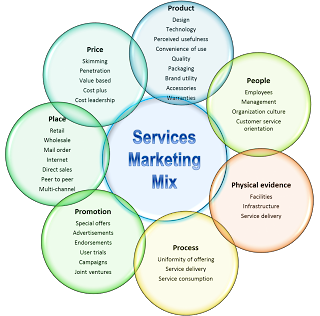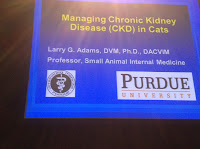¿POR QUÉ ME CAEN LAS VENTAS (VETERINARIAS) Y QUÉ HAGO?
No es lo mismo comprar un yogur que comprar un coche. No es lo mismo comprar un bolígrafo que unas vacaciones a las Maldivas o un curso formativo. La base de la diferencia se halla en el 'involvement' (involucración) que supone la compra.
En ese artículo trataremos temas como la satisfacción, el precio, el concepto value-for-money, smart-shopping y la compra impulsiva vs la racional para poder entender la situación actual que estamos viviendo.
Desde que el pasado mes de septiembre del 2012 el gobierno subiera los impuestos del 10% al 21% a los servicios veterinarios, la facturación media de las clínicas veterinarias en España ha caído dramáticamente: se pasó de un crecimiento de un dígito a un decrecimiento de un dígito en 2012, y este primer trimestre del 2013 las caídas son ya de dos dígitos. ¿Por qué? Aunque existen factores macroeconómicos evidentes, la explicación la he resumido en cuatro respuestas o factores clave:
1. FACTOR VETERINARIO. El veterinario no ha aplicado la subida del IVA.
Con el miedo a perder clientes y competitividad, el veterinario se ha 'tragado' el IVA en vez de repercutirlo al cliente final. La falta de unos conocimientos empresariales hace que muchas veces los profesionales independientes piensen en 'precio, precio y precio' y que la solución universal a los males sea bajar precios para ganar/retener clientela. Error.
 El precio no es más que una variable más del cuadro de mandos que el veterinario como empresario tiene a su disposición; y aun diría más, bajar precios debería ser la última decisión a tomar dentro de la estrategia de un negocio veterinario. Y los datos así lo indican: en la actualidad sólo aproximadamente el 20% de los centros veterinarios facturan más que el año pasado, y son los que han repercutido el IVA y no han bajado la variable precio. Conozco varios centros que mantienen un alto índice de visitas y facturación y se han focalizado en lo que realmente saben hacer: dar un servicio de calidad y confianza, incluso ampliándolo con servicios adicionales para garantizar la satisfacción del cliente.
El precio no es más que una variable más del cuadro de mandos que el veterinario como empresario tiene a su disposición; y aun diría más, bajar precios debería ser la última decisión a tomar dentro de la estrategia de un negocio veterinario. Y los datos así lo indican: en la actualidad sólo aproximadamente el 20% de los centros veterinarios facturan más que el año pasado, y son los que han repercutido el IVA y no han bajado la variable precio. Conozco varios centros que mantienen un alto índice de visitas y facturación y se han focalizado en lo que realmente saben hacer: dar un servicio de calidad y confianza, incluso ampliándolo con servicios adicionales para garantizar la satisfacción del cliente. 2. FACTOR CLIENTE. Disminución de visitas promedio. En el 2012 las visitas se mantuvieron estables, tan solo bajó el ticket medio (gasto por acto de compra); pero en este inicio de año las visitas han bajado un 6%, lo cual acentúa la caída en ventas. Esto se debe al menor poder adquisitivo de la clase media que se va erosionando mes a mes potenciado por la crisis, paro y subidas de carácter impositivo; así como a la búsqueda de alternativas más económicas (más info en el punto 4).
2. FACTOR CLIENTE. Disminución de visitas promedio. En el 2012 las visitas se mantuvieron estables, tan solo bajó el ticket medio (gasto por acto de compra); pero en este inicio de año las visitas han bajado un 6%, lo cual acentúa la caída en ventas. Esto se debe al menor poder adquisitivo de la clase media que se va erosionando mes a mes potenciado por la crisis, paro y subidas de carácter impositivo; así como a la búsqueda de alternativas más económicas (más info en el punto 4). 3. FACTOR CANAL. Aparición de nuevos canales de venta (online).
Son ya muchas las personas (se estima que alrededor del 8% de la venta de alimentación de mascotas se hace online) que se han visto atraídas por la comodidad de una amplia oferta, precios competitivos y transporte gratuito. Ésta es una guerra en donde compiten grandes entidades como Zooplus, Telepiensos, Miscotas o CentrodeNutricionCanina. He oído de veterinarios que han dicho 'pues yo también voy a vender online'. Mi recomendación es: no os metais en este berenjenal! Para entrar a competir online hoy en día se necesita entrar con una propuesta diferencial y estar preparado para gastar unos 6.000-8.000€ al mes en una estrategia SEM (Search Engine Marketing), que no es otra cosa que pagar para estar primero en los buscadores como Google.
Ante todo hay que hacer lo que sabemos hacer mejor que el resto de profesionales: aplicar y engrandecer nuestros conocimientos como veterinarios.
4. FACTOR ACTITUDINAL. El smart-shopping (compra inteligente) ha cambiado las reglas del juego (y debemos adaptarnos a ellas).
Todo lo anteriormente comentado podría resumirse en este cuarto punto; el gran cambio que se ha producido en la sociedad española es que ya no vale todo para vender. Antes, mensajes emocionales (a veces humo) era suficiente para atraer a consumidores. Hoy en día, gracias a internet, el consumidor racionaliza mucho más su compra por lo que mira (búsquedas), comenta (foros), compara y comparte (redes sociales). En otras palabras, ha cambiado su listón en cuanto a lo que la involucración se refiere. Por ello, vamos a mirar con más detalle este concepto para entender sus consecuencias.
En marketing, siempre se ha diferenciado las compras de alta involucración de las de baja involucración. Las de ALTA involucración son aquellas en las que hay un 'riesgo' percibido y por lo tanto se hace un análisis racional para proceder a la decisión de compra (p.e. una casa o un portátil); dicho 'riesgo' se ha asociado a un riesgo económico, por lo que, dicho en palabras llanas: cuando es caro, tomas una decisión razonada. Ello lleva a comparar, comentar, analizar, evaluar y finalmente decidir.
Las compras de BAJA involucración son por lo contrario, aquellas que no conllevan un 'riesgo' y por lo tanto se toman de manera más impulsiva (p.e. bolsa cacahuetes, destornillador, arroz) sin pasar por un proceso racional y estructurado.
Una vez entendido los dos niveles de la involucración ¿cómo afecta esto a entender la caída de ventas del negocio? Cuando la gente tenía dinero en el bolsillo, su listón entre alta y baja involucración podía estar entre los 200 y los 300€ aproximadamente comprando a veces items (ej.móviles) con carácter caprichoso. En nuestra clínica, el cliente compraba por ejemplo el saco de pienso de 15kg a 65€ sin mirar mucho el precio. Lo pagaba sin más puesto que era una compra de baja involucración. Subias el precio y lo seguñia comprando. La situación macroeconómica actual ha llevado a nuestros clientes a bajar ese listón hasta (quizás) los 50€ aproximadamente, siendo casi imposible vender nada por encima de ese precio.
El smart-shopping que practican no es más que buscar una relación calidad-precio óptima, siendo el factor calidad valorado y evaluado de forma más exhaustiva. El consumidor está dispuesto a pagar más si le das algo realmente relevante, sino tenderá a 'reducir la calidad' del producto comprado hasta encontrar el equilibrio que considera justo.
Este concepto, ¿cómo lo aplico a la clínica?
Podríamos aplicar una variante que es el de compra programada vs compra no programada. Cuando un cliente entra en nuestra clínica, hay ciertos valores que controla como es el coste del pienso, medicamentos, vacunas, accesorios incluso peluquerías. Son compras que llamamos programadas puesto que viene a la clínica conociendo el coste de los competidores y el precio que está dispuesto a pagar. Por lo tanto son productos 'sensibles al precio'.
En cambio, hay otros valores que no controla como son los servicios veterinarios (cirugías, consultas, revisiones, radiografías...) y al que no suele aplicarle un criterio analítico y racional y pagará lo que haga falta. Por lo tanto son productos 'no sensibles al precio'.
¿Querías saber que productos puedes promocionar? Ahora lo tienes más fácil para gestionar tu portafolio de productos y servicios :)
Y no olvides lo que realmente marca si un cliente vuelve o no vuelve: la satisfacción.
Como define el gurú del marketing P. Kotler, 'la satisfacción es la percepción de placer o disgusto de un individuo resultante de la comparación del rendimiento o resultado de un producto en relación con sus expectativas'.
Rápidamente entenderemos 2 cosas: la primera es que para satisfacer es necesario conocer las expectativas del consumidor, y la segunda es que cumplir las expectativas no es suficiente, hay que superarlas! Ello es lo que nos llevará a la fidelidad y que el consumidor vuelva a nuestro centro.
CONSEJOS
Acabaré con unos consejos de cómo aplicar lo explicado.
1. Replantea tu propuesta de valor.
La propuesta de valor son todos los beneficios que prometes al consumidor que recibirá. Va más allá del beneficio principal que es curar a la mascota; es el servicio post-venta, la atención, la recomendación, el ambiente de la clínica...todo cuenta!
¿Qué ofreces tú que la clínica de al lado no ofrezca? ¿Podrías ofrecer algo más/ algo diferencial?
2. Revisa tu plan estratégico de comunicación.
 Muchas veces me encuentro con clínicas que siguen comunicando pensando en la unidireccionalidad ('yo hago,yo digo') y usan canales y elementos poco adecuados para sus clientes.
Muchas veces me encuentro con clínicas que siguen comunicando pensando en la unidireccionalidad ('yo hago,yo digo') y usan canales y elementos poco adecuados para sus clientes. Por eso te invito a pensar: ¿Te estás comunicando con tus clientes cómo ellos esperan? ¿Usas los canales adecuados? ¿Les estas ofreciendo productos/servicios por encima de sus expectativas?¿Son de valor añadido? ¿Es tu mensaje relevante?
Sácale punta a tu plan y sé más eficiente y eficaz.
3. Saber para corregir. Conoce mejor cómo te perciben.
Hay un concepto marketiano muy sencillo llamado el NPS (Net Promoting Score), es tan sencillo cómo preguntar a tus clientes la siguiente pregunta "Digame del 1 al 10 en que grado recomendaría la clínica XXXX a un amig@ siendo 1 nada y 10 seguro". Tus clientes satisfechos y probablemente fieles son los que te den un 9 o un 10, les llamaremos Promotores. Si te han valorado con un 7 u 8 son Pasivos; y si te valoran con 6 o menos son DETRACTORES. Resta el porcentaje de promotores al de detractores y sabrás tu NPS.
4. El precio es la ultima variable a bajar. Revisa tu marketing mix.
Mi experiencia los últimos años entre clínicas veterinarias en España, me muestran que la clientela se hace de forma progresiva y suele ser bastante fiel con el paso del tiempo. El consumidor busca un trato agradable y profesional antetodo por lo que las variables de tu marketing mix (producto, promoción, distribucion, ubicacion, proceso, personal, elementos físicos, precio) ejercerán un efecto directo en sus percepciones conformando así tu imagen de marca, y serán puestas en valor con sus expectativas.
Juega con las variables del mix para optimizarlo!
Si quieres saber más sobre la gestión clínica, no dudes en apuntarte a los cursos sobre Gestión Clínica que iniciaremos en breve; o contacta con nosotros para compartir tu caso y te ayudaremos.
En el próximo artículo hablaremos del poder de la marca, el proceso de comunicación y del marketing experiencial.
Un saludo y gracias por interesarte por este artículo.
Simón.






















































